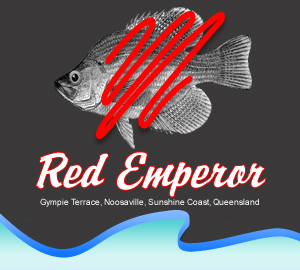Fish of the Queensland Coast
Cuttlefish

Description
Cuttlefish have a more rounded body when compared to a squid and also have a much more rigid 'cuttlebone'. These invertebrates have a small fin that rings nearly the entire mantle, 8 arms and two much longer tentacles used to catch prey. The eyes are large and are located forward on the head. This creature is able to change colour and produce protrusions from its skin to mimic its environment.
Habitat
The Australian Giant Cuttlefish is native to the southern coast of Australia, from Brisbane in Queensland to Shark Bay in Western Australia. It occurs on rocky reefs, seagrass beds, and sand and mud seafloor to a depth of 100 m.
Cuttlefish have two methods of swimming. They can jet propel themselves backwards by sucking water into their body cavity and then expelling it through a funnel. This produces a very rapid backward movement, which is usually used for escaping predators as it is needs a great deal of energy. Hovering and normal swimming is achieved by gentle wave-like movements of their side fins.
Cuttlefish eyes are among the most developed in the animal kingdom although they cannot see colour. They have two spots of concentrated sensor cells on their retina, one to look to the front, and one to look more backwards. The lenses, instead of being reshaped as they are in humans, are pulled around by reshaping the entire eye to change focus.
Cuttlefish change colour to communicate with other cuttlefish and to camouflage themselves.











